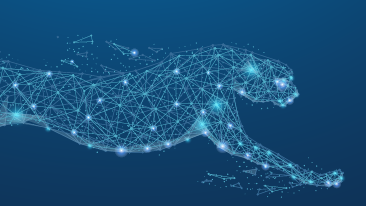Returning from OPTIMIZE 2019, leaders have the opportunity to apply their learnings from last week’s discussions on the direction digital transformation is taking, how it is going to affect global industry and how AspenTech can help companies stay ahead of the curve.
Integral Integration
Digital transformation is helping break down hierarchies between different processes. Before, design, operations and maintenance were separate and data flowed from design to operations and finally maintenance. But by using data from each step, organizations can integrate for optimized performance. Insights gleaned from maintaining equipment can inform how operations are run to make them less damaging and then inform the design process too.
What is important here is data. The more data, the better, as this helps create more accurate models and generate more insights. However, there’s a limit to how much data a human brain, or even multiple brains working together, can process. That is why AI is so integral to digital transformation. It can process the tide of data better than humans before translating it into forms people can readily understand.
The Power of Prediction
While planning to fail is rarely a good strategy, just about every complex process will go wrong in the long run. It’s better to know when something is going to fail in order to schedule maintenance ahead of time and minimize the cost of a shutdown. That’s where machine-learning-driven predictive maintenance comes in.
With accurate sensors and a machine learning capacity, software can accuratele predict when a machine is likely to break down months in advance. This means operators can plan maintenance – parts can be ordered ahead of time, feedstock supplies can be halted or reduced and customers can be warned of upcoming shortages. This means shorter maintenance cycles and minimized consequences compared to an unplanned outage.
Knowing when to do maintenance work is important, but knowing when to delay maintenance is important too. There’s no point stopping a machine from running to work on it when there’s no reason to do so. Not only does this save money, but it keeps people from performing potentially dangerous work. Also, ineffective and inefficient maintenance can be just as damaging as none at all.
The End of Experts
As the workforce evolves, products need to be accessible to everyone – the industry veteran, the millennial, even today’s children, who will become the engineers of tomorrow. When products are intuitive and open to everyone, organizations can focus less on hiring and developing experts in specific areas, such as data science.
Software design is an important part of digitalization – there’s no point creating a tool that’s as complicated as the process it’s meant to simplify. Intuitive applications reduce the barriers to learning new technologies and in effect democratizes data access.
Clean and Green
Optimization isn’t just about maximizing savings, it’s also about minimizing waste. This makes industrial processes cleaner and more environmentally friendly.
Most industries are under pressure to clean up their acts. Government regulations around the world, like limits on sulfur content in marine fuel, call for new technology as well as optimized operations. In a refinery’s sulfur recovery unit, an unoptimized process could result in increased hydrogen sulfide emissions or contaminated fuel, which can have unpleasant consequences for the operator.
Having good environmental credentials will help attract new skilled workers, particularly from younger generations which place a premium on social responsibility.
Driving Forward
While the digital revolution has done much to transform our lives, it still has plenty of room left to grow. Look at the automobile industry – what started with automating certain features, such as opening windows, soon developed into sensors and alarms to help us park. Now, we’re taking that technology to the next level as self-driving cars become a reality.
Beyond that is when new business models develop. Ride-sharing apps are already an early example of how technology can create disruptive business models. Imagine what would happen when you can order a self-driving car instead of owning your own car.
However, digital transformation has not reached all industries equally. Most companies are still using digital tools to optimize processes on an individual level, resulting in only isolated improvements. There are opportunities to take a broader view for greater impact. As we integrate AI, machine learning and other data-driven digital solutions, we will see entire companies become smarter, and beyond that, whole new business models emerge.
Digital transformation has already changed how we all do business. But the real revolution is still on its way.
Learn more about the key takeaways in the new executive brief, Next-Generation Operational Technologies Enable the Smart Enterprise in a Changing World.






Leave A Comment